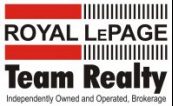Everything you Need to Know About Buying Older Homes
Everything you Need to Know About Buying Older Homes
Buying a 20th century home may fit your real estate needs, but there are many things to consider when exploring an older market.
Buying an older home comes with numerous advantages. They are often less expensive compared to newer builds, with no construction required before you move in. You can pick and choose which rooms or appliances you’d like to renovate or upgrade, slowly personalizing the home over time while maintaining the history it holds.
Common practices and building standards have changed and evolved, which may pose ongoing maintenance requirements for your household. Thankfully, there are many experienced professionals that can inspect the building beforehand and notify you of any substandard conditions.
All things considered, don’t let the cautionary side of this article deter you from choosing an older home. We merely suggest that ‘the times’ be acknowledged when exploring the vast and diverse market of homes built in the late 1900s. Below, we’ve summarized a list of things to consider when looking for a place to settle into, based on the decade of construction.
The Boom – 1950 – 1959
When browsing homes built during the baby boom, it has to be taken into account that many smaller, fairly basic homes were being built quickly and affordably for the returning veterans and their growing families. This is a common age of home in Ottawa’s established neighbourhoods.
These homes have a quaint charm. They’re perfect for singles, couples or young families looking for something smaller. They’re also largely in established neighbourhoods near countless businesses and services.
Houses built in this decade are relatively inexpensive and usually have desirable lot sizes since they were built before modern day developments. This is good news if in the future you’d like to add, renovate, or knock down and start over.
Many common electrical appliances were not developed at the time, leaving some homes ill-equipped for modern systems. Cast iron drain pipes may still be found in some of these homes causing insurability issues.
Some current-day safety procedures were not written at the time of construction, as we were unaware of certain dangers and best practices. Many homes from this decade are coated with lead paint and may contain a carcinogenic fire-repellant known as asbestos, which may need to be professionally removed. The previous owner might have done some of these upgrades so always check with your REALTOR®.
Swinging Sixties – 1960 – 1969
Houses built in the sixties carry much of the similar charm to those built in the fifties, and unfortunately many similar setbacks.
Houses built in this decade are also less expensive relative to others as result of their size and components, finding themselves in similarly established neighbourhoods close by to an array of businesses and services. The style of homes built in this decade may be attractive to homebuyers, containing a unique retro architecture.
More electrical appliances were coming into use at the time, allowing these homes to be more electronic-friendly. These homes also commonly have hardwood flooring, or carpeting.
As for things to look out for, lead paint and asbestos were still in frequent use at the time, removal may be required. There was also a worldwide copper shortage, leading to the use of aluminum wiring which can corrode with other metals in modern appliances and may be difficult to insure without retrofit.
Groovy Seventies – 1970 – 1979
Fortunately, the seventies saw a lot of technological and safety advancement. This was the decade of electrical appliances and better wiring, with the addition of copper plumbing being fairly common.
Common feedback surrounding homes of this decade notes that certain rooms feel closed-off from the rest of the house. Although these rooms may feel this way now, knocking down a few walls can be a fun renovation project to create space in your home. Always be sure to consult a structural engineer prior to starting that type of remodelling project!
Some features of the home help create a retro charm, but others may need replacing. The popcorn ceiling and style of flooring in these homes was experimental and didn’t age very well. You may want to consider replacing these features with something more modern.
Fortunately, this decade is the tail end of asbestos use and lead paint, but they may still be worth inspecting to avoid future complications. Early 1970s homes may still contain aluminum wiring. The plumbing in these homes may need to be replaced approximately every 50 years, putting the lifespan sometime between 2020 and 2030.
Yuppie Eighties – 1980 – 1989
The eighties were a time of a more modern-looking style of home. Young up-and-coming professionals were searching for inexpensive housing to accommodate their young lives and careers, which mostly consisted of an open-concept build.
Inexpensive construction meant that on the one hand, appliances likely had a shorter lifespan and are now outdated. On the other hand, this increases the likelihood that they’ve been replaced. This is something to look for when exploring, as every house from this decade may have a different story.
Primary bathrooms also became the norm during this decade. These houses were built with good insulation and plumbing, but occasionally have problems with heating and air conditioning. Suburban living was the norm, meaning you’ll likely find these homes in family-oriented neighbourhoods with tightly-knit communities.
Classic Nineties – 1990 – 1999
Homes built in the nineties look very similar to those built in the 2000s, with the exception of main level ceiling heights and vinyl v.s. wood-framed windows. The homes in the 90s are often open-concept and spacious, halfway between modern practices and affordability. Homes from this decade may cost you more in power as they were not built to be as energy efficient as those past the turn of the century.
They’re likely in suburban developments not too far out of town, as this was a time of suburban expansion and technological advancement.
There aren’t many common safety concerns with homes of this era, as modern procedures had been developed. Polybutylene tubes used in plumbing are the main concern, as they are less expensive and may leak over time. They have likely been replaced but are good to check for.
Turn of The Century – 2000 – 2009
The early 2000s mark the beginning of the era of electronic devices. These homes are technology-friendly, open-concept and in developing neigbourhoods. They’re ideal for families looking to settle down.
This time frame saw the emergence of higher ceiling heights on the main level and a full switch to vinyl clad window frames.
Appliances won’t need to be replaced for a while and the value of your home will gradually rise as the surrounding areas expand. The biggest concern today would be roofing, as many roofs containing asphalt shingles need to be replaced every 15 years or so.
Key Takeaways
Buying an older home can be less expensive, quaint, retro or a fun renovation project. They’re generally found in healthy, established neighbourhoods near a plethora of businesses and services to benefit you and your household. At Team Realty, we have an array of REALTORS® with extensive experience dealing with older homes.
Have fun exploring the market, but make sure to consult professionals and inspect your potential home before you buy to prevent any unforeseen roadblocks in your moving process.
Tammy Laverty Hall
SALES REPRESENTATIVE
Office 613.725.1171
Whether you are looking to buy, sell or invest in the Ottawa real estate market, I can help. Contact me today for to discuss your real estate needs.

1723 Carling Ave.
Ottawa, Ontario
Canada
Office: 613-725-1171
Toll Free: 1-800-307-1545




The trade marks displayed on this site, including CREA®, MLS®, Multiple Listing Service®, and the associated logos and design marks are owned by the Canadian Real Estate Association. REALTOR® is a trade mark of REALTOR® Canada Inc., a corporation owned by Canadian Real Estate Association and the National Association of REALTORS®. Other trade marks may be owned by real estate boards and other third parties. Nothing contained on this site gives any user the right or license to use any trade mark displayed on this site without the express permission of the owner.
powered by WEBKITS

